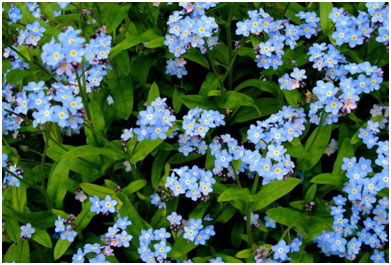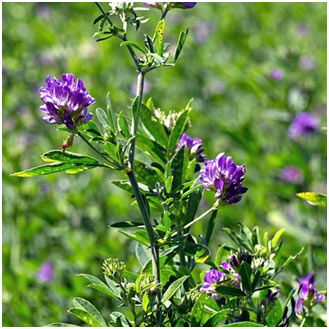Small Flowers on Planet Earth
If you’ve overlooked the appeal of tiny flowers in favor of larger ones, you’re losing out on a world of scent and beauty. You can tuck them into a rock wall, plant them in between pavers, utilize them as fillers, and include them to cut flower arrangements. Part of the wonder of small flowers is their large mass; a single plant might contain thousands of flowers, beckoning butterflies with their shallow nectar tubes.
We, Here provide you the list of many amazing small flowers on Earth.
1.Water-meal
Water-meal is the world’s tiniest flowering plant, also called Wolffia globose. It is a duckweed plant from the Lemnaceae family. The plant itself averages one millimeter long. Furthermore, they appear like a small, green, or yellow-green and free-floating plant. It has no root structure. Each of these small flowers consists of one stamen and one pistil. These surface-floating plants grow on the surface of ponds, streams, lakes, and marshes.

People utilized them as camouflage cover for amphibians, fish, reptiles, etc. Genetic engineers modify them to make low-priced pharmaceuticals such as vaccines. Humans likewise used these small flowers to make bioplastics due to the fact that they consist of around forty-four percent protein. Due to their easiness of propagation, we sometimes used them in cold-water aquaria.
2.Baby’s Breath (Gypsophila)
You may understand baby’s breath best as a cliche filler in Valentine’s bouquets, but this seasonal flower shines in the garden. Although these tiny white flowers and thin, wispy stems have a delicate appearance, they are rather durable in the landscape. Plants flourish in dry, average soil; however, this is one plant that chooses alkaline conditions, which makes it perfect for rock gardens. ‘Bristol Fairy’ is a good performer, and will bloom from April until the end of the summer season.

They come in lovely color varieties of white, pink, orange, red, yellow, and purple.
3.Forget-Me-Not
Forget-me-not is a genome of herbaceous plants belonging to the Boraginaceae family, originate from temperate parts of Eurasia and North America. It can likewise reach up to 12 inches in height and width, scientifically referred to as myosotis. It refers to the shape of leaves, which look like mice ears. Seventy-four types of these flowers are various from each other.

Some ranges of this popular springtime flower produce blue, pink, white, or yellow-colored blossoms with a yellow center and measure one cm in diameter. Flowers bring in moths, bees, flies, and butterflies, primary pollinators of this plant. People utilized them in the preparation of lotions.
4.Fairy Foxglove
Also referred to as starflower and alpine blossom, Erinus alpinus features feather-like petals and dark green stems that can be grown from seed. Nevertheless, it’s simpler to begin Fairy Foxglove flowers with a more mature plant obtained from a nursery. They grow in colors pink, purple, and white.

These flowers will happily grow in any rock crevice or wall. Unlike lots of rock garden plants, fairy foxglove will grow in partial shade.
5.Lobelia
Lobelia is an herbaceous plant that comes from the Campanulaceae family, originated from main and eastern Europe and western Asia. An erect annual or biennial plant that reaches about fifteen– hundred centimeters in height. All types appear different from each other. Nevertheless, every type has alternate and uncomplicated leaves with two-lipped tubular flowers, 5 lobes each.

Although Lobelia in blue is the most common color, the plant is available in numerous hues, including red, white, vibrant purples, and pastels of lavender or pink. Their sweet nectar and bright colors draw in a number of butterfly species. So, Lobelia is a better choice for a butterfly garden or rock garden.
6.Rock Cress
If you aren’t acquainted with rockcress, there are more than a dozen hybrids to start your collection, consisting of the dazzling purple ‘Axcent Lilac’, or you can grow the species Aubrieta gracilis from seed.

In mid to late spring, the evergreen foliage sports hundreds of pinks, purple, or blue flowers on 2 to 4-inch plants. Cut the plants after flowering to maintain the compact, mounding shape.
7.Black swallow-wort
Black swallow-wort species is an herbaceous perennial in the Apocynaceae family, native to Europe. They reach one-two meters in length. The star-shaped flowers have 5 petals with white hairs, and the color varies from dark purple to black. Flowers are determining around25 inches wide, and flowering occurs during June and July.

The tiniest flowers threaten species diversity and animal habitats. However, black swallow-wort can displace milkweed where the female monarchs lay their eggs that use as their larval food and decrease the populations of monarch butterflies. It also reduces the environment of this flower. Hence, selecting and ruining the pods before they open can decrease the spread of this intrusive plant. They are either distasteful or poisonous. So, bugs avoid feeding on them.
8.Snow-In-Summer
The silver foliage of Cerastium tomentosum is an indicator of the drought tolerance of this robust perennial. This versatile plant includes an abundance of white flowers, and you can utilize snow-in-summer to accent border edges, fill in crevices, or tuck in between garden pavers.

Plants are also outstanding rock garden candidates, as they grow in full sun and greatly draining soils. Snow in summer is durable to zone 3, making it an addition to alpine gardens.
9.Sweet Alyssum
The fragrance of small sweet alyssum blooms is so delightful that it’s frequently compared to fresh honey. In early spring, these plants are basic offerings in garden centers everywhere. You can likewise grow a variety of luscious flowers in Easter egg colors from seed. The seeds sprout really rapidly, often in less than a week, and transplants flourish in cool spring weather. Provide your sweet alyssum a trim when flowering gets sparse to rejuvenate the plant.

10.Alfalfa
Alfalfa is a blooming plant, likewise called Lucerne, which belongs to the bean family Fabaceae. It can grow up to 3 feet in height. The plant’s leaves are alternate and scattered along the stem. Each cluster consists of from ten to thirty-five purple flowers.

Alfalfa’s blossom occurs throughout the spring, summertime, or fall, depending upon the planting season. This plant contains high proteins, vitamins such as A, E, D, and K and rich in minerals, consisting of phosphorus, zinc, folate, and manganese. Humans often consumed slender stems and grow seeds. People generally used Alfalfa as animal fodder. The lifespan of this plant is even up to twenty years.

